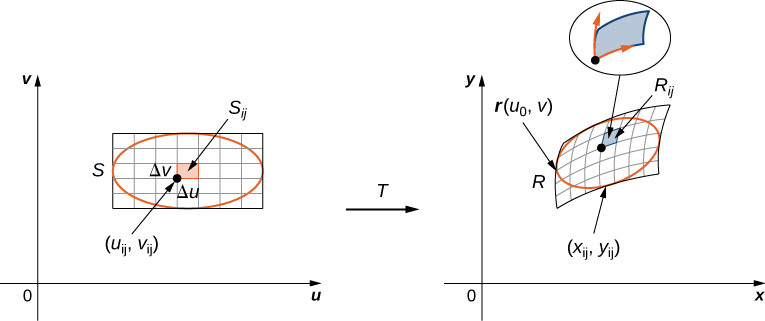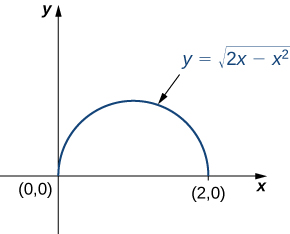| << Chapter < Page | Chapter >> Page > |
Using the definition, we have
Note that the Jacobian is frequently denoted simply by
Note also that
Hence the notation suggests that we can write the Jacobian determinant with partials of in the first row and partials of in the second row.
Find the Jacobian of the transformation given in [link] .
The transformation in the example is where and Thus the Jacobian is
Find the Jacobian of the transformation given in [link] .
The transformation in the example is where and Thus the Jacobian is
Find the Jacobian of the transformation given in the previous checkpoint:
We have already seen that, under the change of variables where and a small region in the is related to the area formed by the product in the by the approximation
Now let’s go back to the definition of double integral for a minute:
Referring to [link] , observe that we divided the region in the into small subrectangles and we let the subrectangles in the be the images of under the transformation

Then the double integral becomes
Notice this is exactly the double Riemann sum for the integral
Let where and be a one-to-one transformation, with a nonzero Jacobian on the interior of the region in the it maps into the region in the If is continuous on then
With this theorem for double integrals, we can change the variables from to in a double integral simply by replacing
when we use the substitutions and and then change the limits of integration accordingly. This change of variables often makes any computations much simpler.
Consider the integral
Use the change of variables and and find the resulting integral.
First we need to find the region of integration. This region is bounded below by and above by (see the following figure).

Squaring and collecting terms, we find that the region is the upper half of the circle that is, In polar coordinates, the circle is so the region of integration in polar coordinates is bounded by and
The Jacobian is as shown in [link] . Since we have
The integrand changes to in polar coordinates, so the double iterated integral is

Notification Switch
Would you like to follow the 'Calculus volume 3' conversation and receive update notifications?